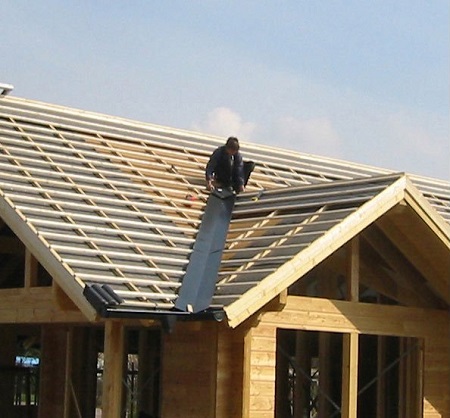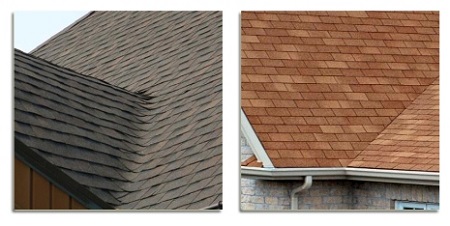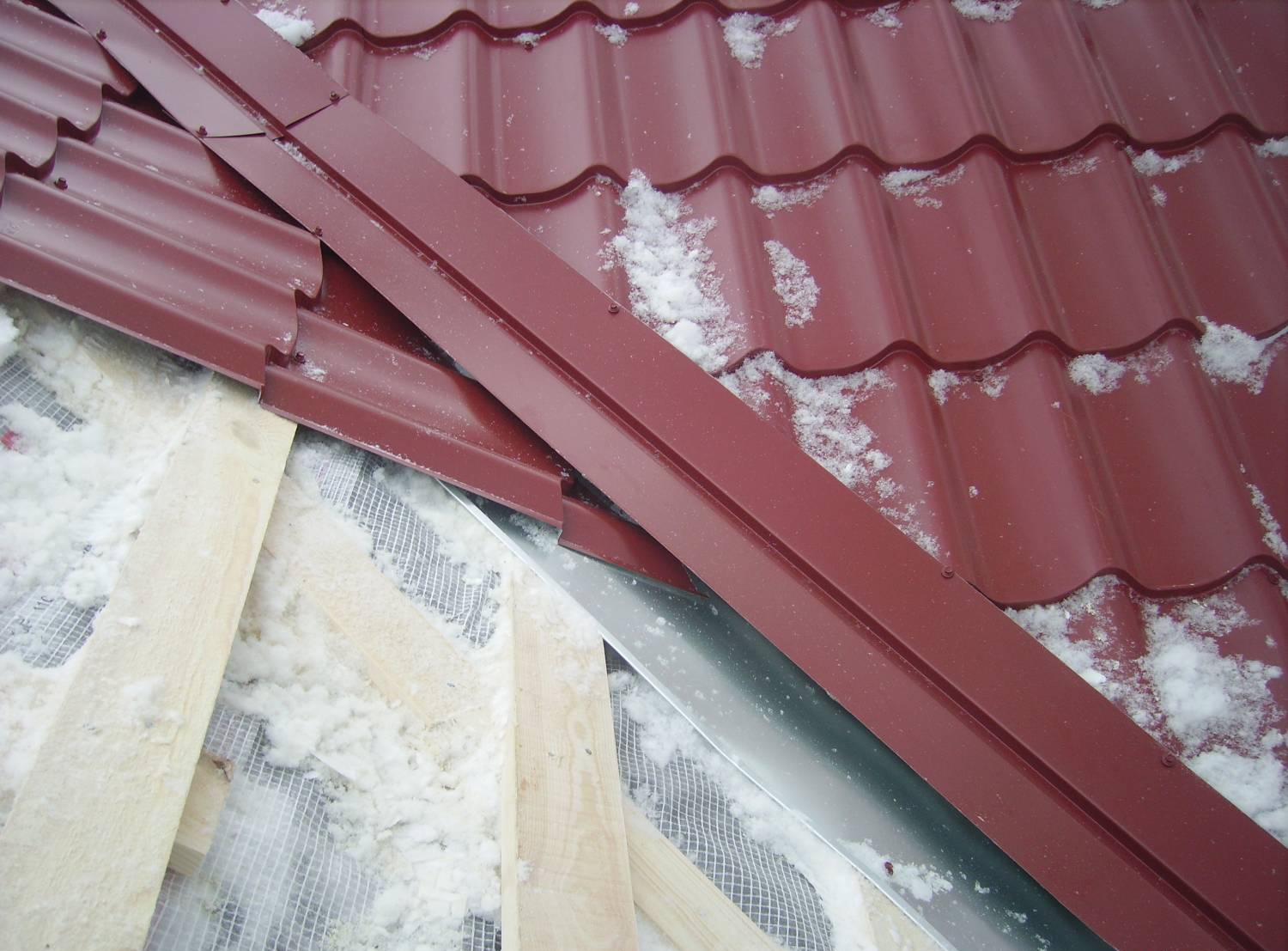The arrangement and installation of the roof is a complex and important event. The accuracy of the calculation, the implementation of the project, etc. depends on literacy and professionalism. The roof endova is the most important structural element of the roofing space. In fact, it is a kind of tray in the inner corner at the junction of the ramps.
The question of what a roof roof is when arranging pitched roofs. Endova performs the function of removing precipitation from the roof. On the one hand, the valley contributes to water disposal, and on the other, in the place of arrangement of this design there is the largest load on the entire roofing system. It is very important to carry out the correct installation and thorough sealing. Throughout the life of the valley, water is drained from the roof.
Endova ondulin is used to design the joints of the roof with a vertical wall. Sometimes it is used to decorate the valley.

The place for attaching the valley should be chosen very carefully so that there is no damage to the middle part of the lower valley. The endow is fastened with the help of roofing screws.
How to arrange a valley
The roof, in which the endow is provided, involves the installation of the upper and lower endow. First you need to properly arrange the foundation. On both sides of the junction of two slopes, waterproofing material on a continuous flooring.
Professionals recommend laying an additional layer of waterproofing along the lower valley. Otherwise, a sealant is also placed between the false and roofing material. For waterproofing, an end carpet is often used, consisting of a polyester fabric that is impregnated with high-quality bitumen and processed on both sides with sprinkles.

The end strip is the line of intersection of the ramps, forming an internal angle. The bottom end strip is designed to drain and prevent moisture from entering the inner space of the roof. The upper end strip is a decorative element for covering the cut of the roofing material.
On the top, the rug carpet has a sprinkle of basalt, and on the bottom is sand. It reliably protects joints from leaks, and also has excellent strength characteristics. The end carpet is fixed either with a sticker or with nails after 20 cm. When using such a carpet, the gutter will be made of durable solid material.
Next, the device of the lower valley is called, which is called false. Such a valley is presented in the form of a wide plate, which is bent at an angle that corresponds to the angle of the roof slopes. This plate with screws is attached to the crate every 30 cm. It is necessary to pay attention to the bottom edge of the valley above the cornice board. If the lower endow consists of several elements, then they need to be mounted from the bottom up. To increase the waterproofing, it is necessary to seal the false joints with sealant.

It is advisable to use galvanized steel for the endova device, which will extend the life of the product and the roof as a whole.
After mounting the false and waterproofing layer, they begin to install the upper valley. This structural element performs the function of draining rainwater from the roof slopes. Since this valley is in full view, it is recommended to perform it with the same material as the entire roof.
When installing a roof from a profiled sheet or metal tile, the material is laid at a distance of 10 cm on two sides of the line of the inner corner. At the very end, the upper endova or a decorative overlay is mounted.Such an overlay is mounted, like the lower endova with an overlap of 10-12 cm from bottom to top.
If the valley is mounted between the main ramp and dormers or dormers, then an additional board is also installed as a continuous battens at the junction of the ramps.
For the device, valleys use special brackets with which the groove is attached. Also use a foam rubber self-adhesive strip that protects against snow, water and dust. For high-quality installation, valleys use half tiles. Another constructive element is the ribbon for the valley used at the joints. We should not forget that the valley should be the same color as the roof, and preferably from the same material.
Endova is mounted in such ways: open, closed and articulated.
Open endova
To begin with, a strip of corrugated roll roofing 46 cm wide is laid in the center of the valley with the mineral surface down. The end carpet must be firmly pressed to the crest and nailed with a nail with an interval of 2.5 cm. You need to start nailing from the outer ends. The lower edges of the roof are cut. On both sides of the roof strip, plastic cement should be applied with a strip of 10 cm and 1.5 mm thick. If a butt joint of the roof is required, then the upper section should overlap the bottom by 30 cm and is fixed with plastic cement. Next, the strip of the rolled roof is laid on top of the previous face up and fixed with cement, as well as nails. Before laying roofing panels, it is necessary to draw two lines along the length of the valley on each side with chalk. The lines are indented 10 cm from each side of the ridge.
The corrugated surface of the roll roof can be replaced with non-corrosive metal. To ensure maximum protection and prevent condensation, a waterproof membrane is placed under the corrugated roll surface or under the metal.

For an open valley, it is necessary to install a waterproofing system according to the technology that is used when installing pitched roofs.
Closed Endova
A closed valley is used to equip steep roofs, where adjoining slopes are intertwined or connected end-to-end. Before laying roofing tiles along the entire length of the valley, a waterproofing strip of corrugated roll roofing 90 cm wide should be applied. Each row of roofing tiles is laid along the slope, then the row continues through the valley and enters the adjacent slope for 30 cm. The basement roof is nailed, but it is impossible to hammer nails over the chalk line. Endova ondulin is required for installation at the joints of negative angles, it protects the joint from water.
On the adjacent slope, a chalk line should be drawn, 5 cm away from the inter-crest joint. Roofing tiles on the adjacent slope should be laid down to the chalk line, and then cut off the excess. Diagonally, the upper corner of each panel must be cut to improve water drainage. So endova will last a long time.
Stranded endova

The bound endova is completely covered with roofing materials. Alternating rows of tiles are intertwined with each other and stacked through the valley. Since the end carpet provides additional coverage, it will not be necessary to cover the inter-crest joint in several layers. To do this, an end carpet with a width of 91 cm is used. A waterproofing layer is laid on top of the underlying layer. If the inter-crest joints are intertwined, then the roof tile is first laid.





Alas, no comments yet. Be the first!